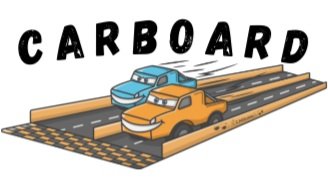We’ve all seen the rugged 4x4 vehicle we now call the Jeep in television, film, and on the roadways, but the origin of this vehicle dates to World War II. The original concept for what would become the Jeep was commissioned by the U. S. Army ahead of the war as they were looking for a lightweight, all-terrain vehicle for reconnaissance missions.
Although the U.S. Army put this design challenge to over 135 automakers, only 3 responded with their own unique design—Bantam, Willys, and Ford and ultimately all three collectively produced what we call the Jeep today.
The first of these vehicles was presented to the U. S. Army on Veteran’s Day, 1940.
The Army had very specific design criteria for how this new vehicle needed to be designed. Looking for the vehicle to not exceed 2160 lbs, Willys created the Willys MA but had to make a lot of the hardware like the screws, nuts, and bolts shorter and ultimately had to remove several items. This vehicle didn’t even have doors! The final prototype still exceeded the weight specifications by 400 lbs!
This new design went through several phases of testing but ultimately the contract to produce this new vehicle was awarded to Willys-Overland with an initial order of 16,000 “jeeps” with a price tag of just under $750 for each vehicle. The MA’s were then sent to allies to the U.S. in England and Russia.
The jeep gained popularity and sentimentality for its use and aesthetics. If you’ve ever seen photos of the soldiers during the war, you more than likely saw their Jeep as well. The Jeeps became thought of as heroes of the war and some felt that it came second only to a soldier’s rifle as far as importance.
One WWII reporter, Ernie Pyle was quoted as saying, "It did everything. It went everywhere. Was as faithful as a dog, as strong as a mule, and as agile as a goat.”
After the production of the Jeep, horses, motorcycles, and sidecars weren’t needed because of the Jeep’s utility capabilities. Now known as Willys MB’s, the Jeeps were small enough to be loaded into transport aircraft and could be fitted with machine guns, used for long-range desert patrol, field ambulances, and even tractors.
Although this vehicle was created for war, it sparked interest among civilians, most notably farmers. At that time, in 1945 it was estimated that there were about 5.5 million farmers in the U.S. with more than 4 million working without tractors.
Willys-Overland began to market this version of the Jeep, the CJ-2A as an “All-Around Farm Work Horse”, which began to serve not only the agriculture industry but other industries around the world as well.
Throughout the 1940s Willys-Overland continued to add other features to the CJ-2A like more comfortable seats, highway speeds up to 60 miles per hour, and automatic windshield wipers on the driver’s side. This is also when new station wagons and trucks were being added to the product line for consumer use.
In 1950, Willys-Overland registered the trademark, “Jeep” as the company began marketing itself as, “The world’s largest maker of four-wheeled vehicles.” More improvements have been made to the Jeep, as it’s continued to be a staple among militaries around the world as well as a civilian favorite for its rugged look and off-road capabilities.
“Jeepers” have even been known to form their own community of other Jeep owners. Don’t be surprised if you see a rubber ducky on a Jeep as it’s a fun way for fellow Jeep owners to say hello to other Jeep owners.
We love to see the excitement for cars and trucks as we know that a lot of the fascination begins in childhood, whether from our favorite television show or movie screen. At CarBoard we love being a part of that imagination as kids love playing with their favorite toy cars, toy trucks and Jeeps on our eco-friendly design.
Expandable with easy set-up and breakdown for storage, CarBoard makes the perfect addition to your child’s collection and imagination!



